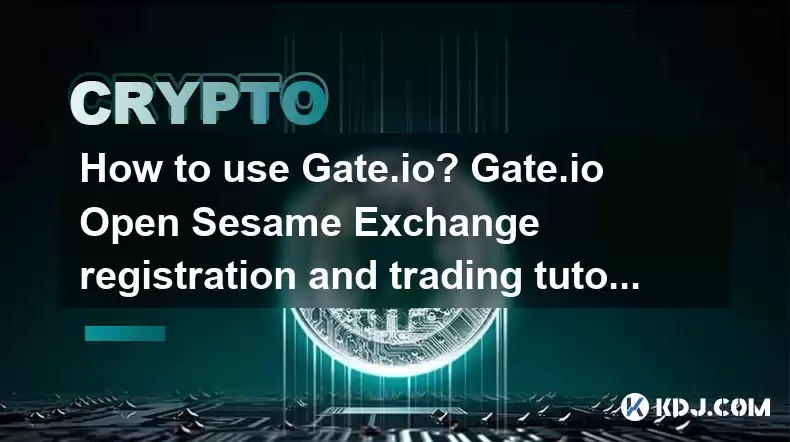-
 Bitcoin
Bitcoin $117700
-1.00% -
 Ethereum
Ethereum $4458
-3.91% -
 XRP
XRP $3.119
0.14% -
 Tether USDt
Tether USDt $1.001
-0.02% -
 BNB
BNB $836.6
-1.56% -
 Solana
Solana $189.5
-3.90% -
 USDC
USDC $0.9998
-0.02% -
 Dogecoin
Dogecoin $0.2335
1.29% -
 Cardano
Cardano $0.9642
1.51% -
 TRON
TRON $0.3539
-1.19% -
 Hyperliquid
Hyperliquid $47.41
-1.84% -
 Chainlink
Chainlink $21.92
-3.28% -
 Stellar
Stellar $0.4286
-0.23% -
 Sui
Sui $3.724
-3.29% -
 Bitcoin Cash
Bitcoin Cash $594.8
-0.78% -
 Ethena USDe
Ethena USDe $1.001
0.04% -
 Hedera
Hedera $0.2501
-2.06% -
 Avalanche
Avalanche $23.96
-4.87% -
 Litecoin
Litecoin $119.0
-2.32% -
 Toncoin
Toncoin $3.473
0.82% -
 UNUS SED LEO
UNUS SED LEO $9.596
0.17% -
 Shiba Inu
Shiba Inu $0.00001301
-0.39% -
 Uniswap
Uniswap $11.03
-0.25% -
 Polkadot
Polkadot $3.935
-2.62% -
 Dai
Dai $1.000
0.01% -
 Bitget Token
Bitget Token $4.564
-1.76% -
 Cronos
Cronos $0.1512
-4.11% -
 Ethena
Ethena $0.7306
-1.09% -
 Pepe
Pepe $0.00001087
-2.68% -
 Aave
Aave $300.2
-4.00%
How to use Gate.io? Gate.io Open Sesame Exchange registration and trading tutorial for newbies
To register on Gate.io, create an account, complete KYC, enable 2FA, and link your email and mobile number for enhanced security.
Feb 04, 2025 at 09:12 pm

Key Points:
- Account Registration (5 steps): Creating a new account, completing KYC, setting security options, enabling 2FA, and linking methods.
- Depositing Funds (5 steps): Selecting a crypto asset, choosing a deposit option, generating a deposit address, sending funds, and confirming the deposit.
- Spot Trading Basics (6 steps): Navigating the trading interface, placing orders, understanding order types, managing open orders, canceling orders, and analyzing market data.
- Advanced Trading Features (5 steps): Using margin trading, perpetual contracts, grid trading bots, cross-margin mode, and candlestick patterns.
- Using Spot Trading Pro (5 steps): Understanding the interface, placing orders, using the advanced chart, setting trailing stop orders, and researching assets.
- Maintaining Security (7 steps): Setting up 2FA, using anti-phishing codes, being cautious of giveaway scams, disabling API access, reviewing your security settings, avoiding phishing attempts, and reporting any suspicious activity.
- Frequently Asked Questions (FAQs)
How to Register and Trade on Gate.io: A Comprehensive Guide
Gate.io is a reputable and feature-rich cryptocurrency exchange known for its secure platform, diverse token offerings, and advanced trading options. This guide will provide a comprehensive overview of the essential steps involved in registering, trading, and securing your account on Gate.io.
1. Account Registration
- Visit the official Gate.io website and click the "Register" button.
- Provide your email address and set a password.
- Agree to the terms of service and privacy policy.
- Complete the required Know-Your-Customer (KYC) verification by uploading a photo of your identification document and a selfie.
- Set up two-factor authentication (2FA) using Google Authenticator or a similar app.
- Link your email address and mobile phone number as additional security measures.
2. Depositing Funds
- Go to "My Assets" and click the "Deposit" button.
- Select the crypto asset you wish to deposit and choose a deposit option (e.g., on-chain, fiat onramp, etc.).
- Generate a deposit address by clicking "Generate Deposit Address."
- Send your funds to the provided address.
- Confirm your deposit by clicking on the "Confirm Deposit" link in the email you receive or by checking the blockchain explorer.
3. Spot Trading Basics
- Go to "Trade" and select "Spot Trading."
- Choose the trading pair you want to trade (e.g., BTC/USDT).
- Select an order type (e.g., limit order, market order, conditional order).
- Set the desired price and amount.
- Click the "Buy" or "Sell" button to place your order.
- Manage your open orders by clicking on "Open Orders."
- Cancel orders by clicking the "Cancel" button for each order.
- Analyze market data using the chart and order book provided.
4. Advanced Trading Features
- Enable margin trading under "Finance" > "Margin Trading."
- Trade perpetual contracts under "Trade" > "Derivatives" > "Perpetual Contracts."
- Access grid trading bots under "Trade" > "Grid Trading."
- Enable cross-margin mode by adjusting your "Account Settings."
- Utilize candlestick patterns for technical analysis in the advanced trading charts.
5. Using Spot Trading Pro
- Go to "Trade" and select "Spot Trading Pro."
- Understand the interface, which includes a detailed order book, market depth, and charting tools.
- Place orders using the advanced order form with options for multiple order types.
- Use the advanced chart to analyze complex price patterns.
- Set trailing stop orders to automatically exit trades at a specified trailing distance from the market price.
- Research assets by clicking on the asset name in the order book.
6. Maintaining Security
- Enable 2FA using a strong and reliable authentication app.
- Use anti-phishing codes sent to your registered email address whenever logging into your account.
- Be cautious of giveaway scams and phishing emails.
- Disable API access unless absolutely necessary.
- Review your security settings regularly under "Account Settings" > "Security."
- Avoid clicking on suspicious links or downloading files from unknown sources.
- Report any suspicious activity to Gate.io's support team immediately.
FAQs
- How long does it take for KYC verification?
KYC verification is usually processed within 24 hours after submitting your documents. However, during peak periods, it may take a few days.
- What are the trading fees on Gate.io?
Trading fees are tiered based on your monthly trading volume. The minimum trading fee for spot trading is 0.2%, and the maximum is 0.02%.
- Does Gate.io support cross-margin trading?
Yes, Gate.io supports cross-margin trading, which allows you to use your entire account balance as margin for your trades.
- What is Spot Trading Pro?
Spot Trading Pro is a more advanced version of the regular spot trading platform. It offers a more detailed interface, advanced order types, and real-time market data.
- How do I contact Gate.io support?
You can contact Gate.io support through live chat, email (support@gate.io), or by submitting a request through their online form.
Disclaimer:info@kdj.com
The information provided is not trading advice. kdj.com does not assume any responsibility for any investments made based on the information provided in this article. Cryptocurrencies are highly volatile and it is highly recommended that you invest with caution after thorough research!
If you believe that the content used on this website infringes your copyright, please contact us immediately (info@kdj.com) and we will delete it promptly.
- Kazakhstan's Crypto Leap: Bitcoin ETF and Central Asia's Digital Finance Future
- 2025-08-13 12:45:19
- BlockDAG Presale Blazes Past $371M: Fundraising Frenzy Fuels Crypto Sensation
- 2025-08-13 13:05:21
- Meme Coins: Chasing the 2025 Surge – Which Will Moonshot?
- 2025-08-13 10:25:23
- Bitcoin's Wild Ride: Rally, Pullback, and What's Next
- 2025-08-13 10:25:23
- Bitcoin, Bitmax, and Institutional Demand: A New Era of Crypto Investment
- 2025-08-13 10:45:12
- Solana, ROAM, and Airdrops: What's the Buzz in 2025?
- 2025-08-13 11:35:13
Related knowledge

What is Ethereum’s Slashing mechanism and how to punish malicious behavior?
Feb 20,2025 at 03:08am
Key PointsOverview of slashingDifferent types of slashing in EthereumIncentives and consequences of slashingIdentifying and reporting slashed validato...

What is the verifier node of Ethereum and how to become a verifier?
Feb 19,2025 at 06:00pm
The Verifier Node of Ethereum: A Comprehensive GuideKey Points:What is a Verifier Node?How to Become a Verifier NodeResponsibilities and Rewards of a ...

What is Ethereum’s staking, and how to participate and earn money?
Feb 19,2025 at 04:37pm
Key Points:Understanding Ethereum's Staking MechanismSteps to Participate in StakingBenefits and Rewards of StakingSecurity and Risk ConsiderationsTec...

What is Ethereum’s DAO (Decentralized Autonomous Organization) and how does it work?
Feb 20,2025 at 03:12am
Key PointsDefinition and Structure of a DAOGovernance and Decision-Making in DAOsBenefits and Use Cases of DAOsChallenges and Limitations of DAOsWhat ...

What is Ethereum's multi-signature wallet and how to improve security?
Feb 20,2025 at 02:18pm
Key Points:Understanding the Concept of a Multi-Signature WalletBenefits and Drawbacks of Multisig WalletsRequirements for Setting Up a Multisig Walle...

What is Ethereum's oracle and how to provide data for smart contracts?
Feb 21,2025 at 01:30am
Key Points:Understanding the concept of oracles in EthereumExploring different types of oraclesDetailed guide on how to provide data for smart contrac...

What is Ethereum’s Slashing mechanism and how to punish malicious behavior?
Feb 20,2025 at 03:08am
Key PointsOverview of slashingDifferent types of slashing in EthereumIncentives and consequences of slashingIdentifying and reporting slashed validato...

What is the verifier node of Ethereum and how to become a verifier?
Feb 19,2025 at 06:00pm
The Verifier Node of Ethereum: A Comprehensive GuideKey Points:What is a Verifier Node?How to Become a Verifier NodeResponsibilities and Rewards of a ...

What is Ethereum’s staking, and how to participate and earn money?
Feb 19,2025 at 04:37pm
Key Points:Understanding Ethereum's Staking MechanismSteps to Participate in StakingBenefits and Rewards of StakingSecurity and Risk ConsiderationsTec...

What is Ethereum’s DAO (Decentralized Autonomous Organization) and how does it work?
Feb 20,2025 at 03:12am
Key PointsDefinition and Structure of a DAOGovernance and Decision-Making in DAOsBenefits and Use Cases of DAOsChallenges and Limitations of DAOsWhat ...

What is Ethereum's multi-signature wallet and how to improve security?
Feb 20,2025 at 02:18pm
Key Points:Understanding the Concept of a Multi-Signature WalletBenefits and Drawbacks of Multisig WalletsRequirements for Setting Up a Multisig Walle...

What is Ethereum's oracle and how to provide data for smart contracts?
Feb 21,2025 at 01:30am
Key Points:Understanding the concept of oracles in EthereumExploring different types of oraclesDetailed guide on how to provide data for smart contrac...
See all articles

























































































